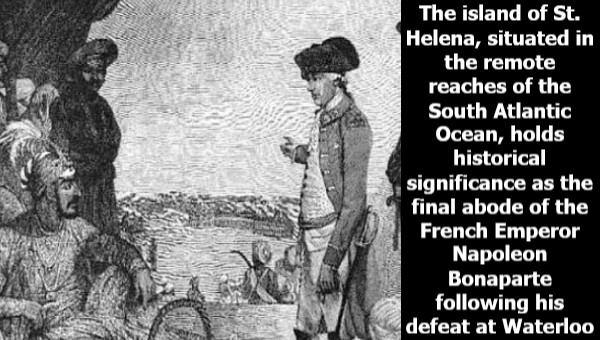Babu Jagat Singh, a prominent landlord hailing from Banaras, found himself sentenced to exile on the remote island of St. Helena, marking a significant chapter in colonial India’s history. This verdict, handed down by a British judge on the 18th of October 1799, encapsulated the prevailing sentiments of insecurity among the English colonial administration following Jagat Singh’s perceived threat and involvement in resistance movements against British rule.

Jagat Singh’s journey towards exile stemmed from a tumultuous period marked by a brief uprising in 1779, where he aligned himself with Wazir Ali, a deposed nawab, in defiance of British authority. The subsequent collapse of this rebellion led to Jagat Singh’s incarceration, ultimately culminating in his intended transport to St. Helena.
However, Jagat Singh’s fate took an unexpected turn as he reportedly plunged into the Hooghly River from a vessel en route to the port in October 1799, thereby eluding exile to St. Helena. The motivations behind this drastic act remain elusive, with speculation ranging from apprehensions regarding departure from his homeland to concerns regarding potential defilement of his Brahmin caste by traversing the sea.
It will be an addendum to piece on Jagat Singh and Napoleon Bonaparte that Dinuzulu (1868–1913), Zulu king was also exiled in St. Helena from 1890–1897 and the last in line was Khalid bin Bargash (1874–1927), deposed Sultan of Zanzibar, exiled in St. Helena in 1917.
The recent release of book, ‘The Lost Hero of Banaras: Babu Jagat Singh’, co-authored by H.A. Qureshi and Prof. Shreya Patha, seeks to recontextualise Jagat Singh’s legacy within the annals of Indian history. Departing from entrenched colonial narratives, the book endeavors to shed light on overlooked figures, including Jagat Singh, who have been relegated to the peripheries of historical discourse.

Central to Jagat Singh’s narrative is his purported role in the discovery of the ancient Dharmarajjika Stupa in Sarnath, a contribution historically overshadowed by the accolades accorded to Alexander Cunningham. The book challenges prevailing interpretations of Jagat Singh’s actions, positing that his efforts led to the unearthing of this archaeological site, thereby contesting portrayals of wanton plundering.
By interrogating established historical narratives and reclaiming lost narratives, ‘The Lost Hero of Banaras: Babu Jagat Singh’ serves as a testament to the complexities inherent in historical interpretation. Jagat Singh’s story underscores the power dynamics inherent in the construction of history, urging a reevaluation of marginalised perspectives and forgotten chapters within the broader historical narrative.
See also:
Envoys opt for Surya Namaskar & dosa
AAI’s dynamic chairman Sanjeev Kumar









